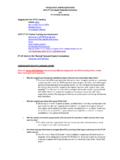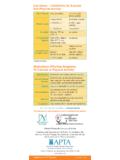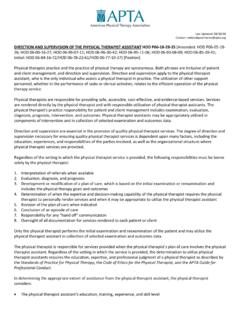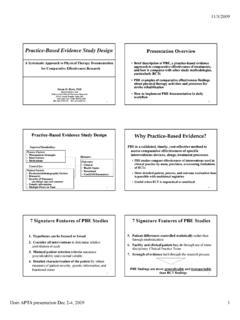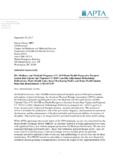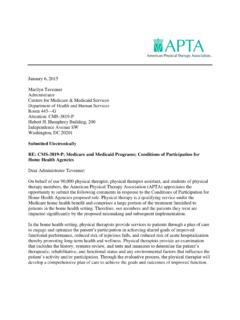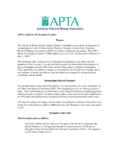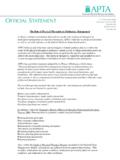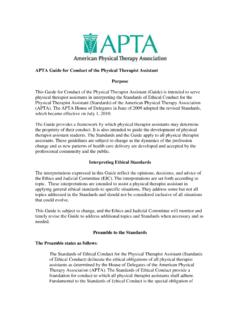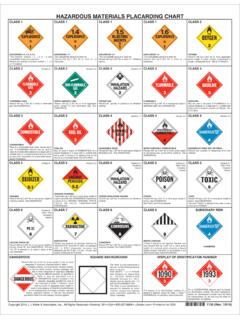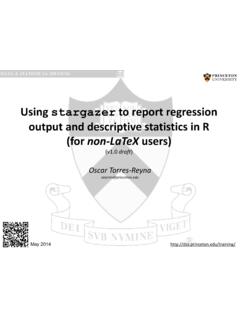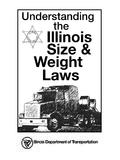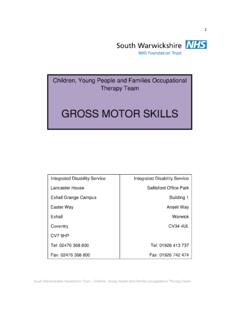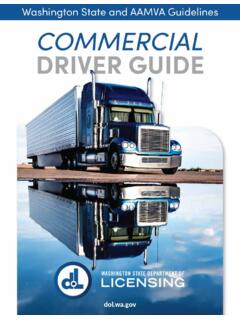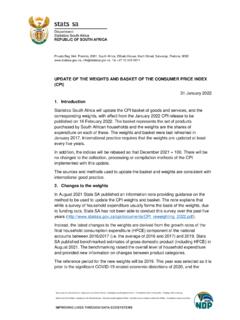Transcription of Physical Therapy Evaluation Reference Table 97161 97162 …
1 How to use this guide: Physical Therapy evaluations require the following components in selecting the correct Evaluation level History, Examination, Clinical Presentation, and Clinical Decision Making. Additional guiding factors include coordination, consultation, and collaboration of care consistent with the nature of the problem and the needs of the patient. The Table inside summarizes the requirements for reporting Physical Therapy Evaluation Guide to the 3 Levels of Physical Therapy Evaluation971619716297163 Three codes 97161 , 97162 , and 97163 are used for Physical Therapy Evaluation .
2 2020 American Physical Therapy Association. All rights reserved. Physical Therapy Evaluation Reference TablePhysical Therapy Evaluation Reference TableCPT Code971619716297163 Required Components (all are required in selecting Evaluation level)Historyno personal factors and/or comorbidities X1-2 personal factors and/or comorbiditiesX3 or more personal factors and/or comorbiditiesXExamination of body system(s) (elements include body structures and functions, activity limitations, and/or participation restrictions)addressing 1-2 elementsXaddressing a total of 3 or more elementsXaddressing a total of 4 or more elementsXClinical PresentationStableXEvolvingXUnstable XClinical Decision Making (complexity)lowmoderatehighDevelopment of Plan of CareAdditional Guiding FactorsCoordination, consultation, and collaboration of care with physicians, other qualified health care professionals, or agencies is provided consistent with the nature of the problem(s) and the needs of the patient, family, and/or other Face-to-Face Time (minutes)
3 203045(See back for definitions of terms highlighted in blue.)In addition, code 97164 is used for Physical Therapy reevaluation. NOTE: These codes replace the 97001 Evaluation code and 97002 reevaluation code for Medicare and commercial payers; claims for workers comp and auto liability may continue to use 97001 and is a registered trademark of the American Medical Association. 2020 American Physical Therapy Association. All rights reserved. Activity limitations: Difficulties an individual may have in executing a task, action, or activities (eg, inability to perform tasks due to abnormal vital sign response to increased movement or activity).
4 Body functions: The physiological functions of body systems, including psychological functionsBody regions: In reporting Physical Therapy evaluations, body regions are defined as head, neck, back, lower extremities, upper extremities, and structures: The structural or anatomical parts of the body, such as organs, limbs, and their components, classified according to body systemsBody systems: In reporting Physical Therapy evaluations, the systems review includes the following: For the cardiovascular/pulmonary system: the assessment of heart rate, respiratory rate, blood pressure, and edema For the integumentary system: the assessment of pliability (texture), presence of scar formation, skin color, and skin integrity For the musculoskeletal system: the assessment of gross symmetry, gross range of motion, gross strength, height, and weight For the neuromuscular system.
5 A general assessment of gross coordinated movement (eg, balance, gait, locomotion, transfers, and transitions) and motor function (motor control and motor learning) For communication ability, affect, cognition, language, and learning style: the assessment of the ability to make needs known, consciousness, orientation (person, place, and time), expected emotional/behavioral responses, and learning preferences (eg, learning barriers, education needs) Participation restrictions: Problems an individual may experience in involvement in life situations (eg, inability to engage in community social events due to exhaustion).
6 Personal factors: Factors include sex, age, coping styles, social background, education, profession, past and current experience, overall behavior pattern, character, and other factors that influence how disability is experienced by the individual. Personal factors could exist but may or may not negatively impact the Physical Therapy plan of 2020 American Physical Therapy Association. All rights reserved.

